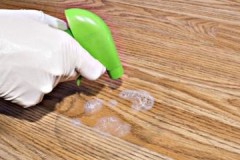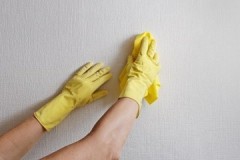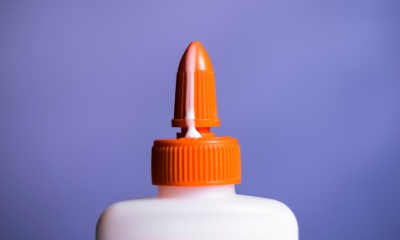 Glue on the surface can be a serious problem. It not only worsens the appearance of the product, but also can lead to its deterioration.
Glue on the surface can be a serious problem. It not only worsens the appearance of the product, but also can lead to its deterioration.
It can be difficult to cope with a sticky spot, since some formulations are highly durable and do not lend themselves to weak detergents.
For information on how to scrub different types of glue from different surfaces, read the article.
Content
Universal compounds for removing adhesive traces at home
Regardless of the type of glue, there are versatile remedies that will deal with any kind of stain. These include:
- Plain water... It can dissolve almost any glue if you act quickly. With its help, you can get rid of stationery, latex, vegetable, carpentry, wallpaper and PVA glue. The principle of removal is simple: the stained area is washed until there are no stains on it.
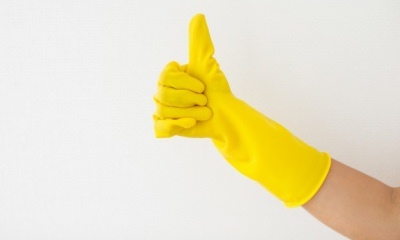 Alcohol. It handles most adhesives. Alcohol dissolves even those glue molecules that have had time to firmly adhere to the surface. It is applied to cotton wool or a sponge, with which the stain is rubbed until it disappears completely. If necessary, leave the material on the stain with a compress.
Alcohol. It handles most adhesives. Alcohol dissolves even those glue molecules that have had time to firmly adhere to the surface. It is applied to cotton wool or a sponge, with which the stain is rubbed until it disappears completely. If necessary, leave the material on the stain with a compress.- Acetone. It is a popular solvent, as it can handle even tough stains. To remove the adhesive in acetone, a cotton pad is moistened with which the surface is treated until it is completely cleaned.
- Vegetable oil... The fatty base makes the adhesive more pliable and easier to remove from the surface. For cleaning, use a cotton pad dipped in oil, with which the stain is rubbed until it disappears completely. If the glue is persistent, then you will need to make some effort, but the oil copes with traces from the stickers in no time.
- Solvents: gasoline, white spirit, turpentine, solvent 646, R-4, RS-2, etc.... These caustic formulations allow you to remove different types of adhesives without leaving a trace. They are used to deal with stubborn stains, for example, from silicate glue, Titanium, liquid nails and more.
Acetone and solvents are used with caution, as they can damage some surfaces, such as upholstery furniture or paper.
How can different types of adhesives be removed?
Removal methods will vary depending on the type of adhesive.... For some formulations, ordinary water is effective, while other stains are difficult to remove with the help of strong solvents.
How to scrub PVA?
PVA is a polyvinyl acetate emulsion dissolved in water. Therefore, it is easy to deal with fresh and dried spots. To remove traces of PVA, you can use ammonia.
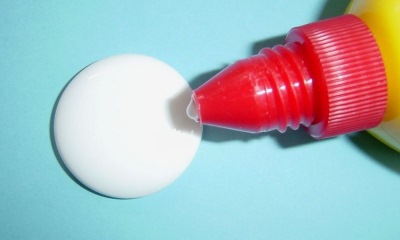 Procedure:
Procedure:
- apply alcohol to a cotton swab;
- moisten the stain with it, and if it is dried, then the cotton wool is left for 5-10 minutes;
- remove traces of glue, wipe the surface with a clean damp cloth.
If the glue does not have time to dry, it can be treated with warm water without any problems.
Super glue
Superglue is different in that it dries very quickly... Therefore, even if you immediately treat the surface with water, traces of it will still remain.
Also on sale you can find a special tool called Anticlea. It was specially designed to combat Superglue. The composition is universal, so it can even treat the skin of the hands.
Read more here.
Epoxy
Epoxy glue or resin becomes very strong after curing, so it can only be washed off with a solvent.
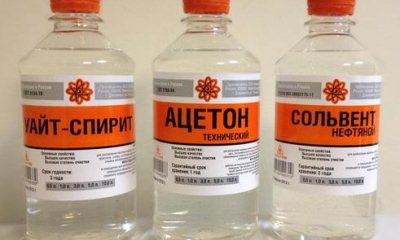 You can choose from one of the following means:
You can choose from one of the following means:
- Acetone.
- Toluene.
- Butyl acetate.
- Methylbenzene.
- Thinner 646.
All of these liquids are used according to the same instructions:
- apply the composition to the stain;
- cover it with a cotton pad or paper towel so that the solvent does not evaporate;
- leave for half an hour;
- remove the softened composition with a soft spatula, rub the surface until it is completely cleaned, and then rinse it with clean water.
Another way to remove epoxy is by power cleaning. If the surface is not afraid of contact with hard sharp objects, then the resin can be removed with the sharp part of a putty knife.
Hot melt glue (hot)
Hot melt glue and hot glue from the gun will firmly bond the various surfaces, so it will be difficult to cope with the hardened mass. There are 2 effective ways to deal with hot glue stains - heating and freezing.
Heat treatment is carried out as follows:
- Cover the stain with thick paper.
- Warm up the iron.
- They pass them over the surface of the cardboard. Remove the softened glue along with a sheet of paper. If it was not possible to cope with the pollution the first time, the procedure is repeated.
Some types of hot melt glue are afraid of low temperatures (information about this can be found on the packaging). To get rid of the stain, the product is placed in the freezer for several hours, after which it is scraped off with a plastic spatula.
Clerical
Stationery glue is an aqueous solution of sodium silicate. Therefore, you can cope with it with warm water and laundry soap.
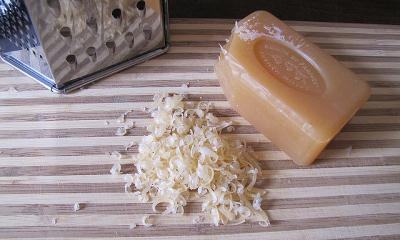 Mode of application:
Mode of application:
- grate laundry soap;
- dissolve the shavings in warm water, foam it;
- use a sponge to apply the solution to the stain;
- leave for 5-10 minutes to soften;
- remove the composition with a rag, rinse the treated area with clean water.
Since the adhesive is water based, there is no need to use any specialized solvents.
Cosmophen
Cosmofen glue dries instantly and leaves behind persistent stains, which can be dealt with with the help of a pharmacy product called Dimexide. This disinfecting composition is used for medicinal purposes, as an antiseptic.However, undiluted, it helps to cope with Cosmofen cyanoacrylate adhesive.
Mode of application:
- Apply Dimexide to a cotton pad.
- Use it to moisten Cosmophen stain.
- Leave on for 2-5 minutes.
- Remove residues with a bandage or gauze.
Titanium
Titanium glue is based on polyurethane, therefore, after drying, it hardens and becomes very durable. Dimethyl ether, polypropylene, isomers and other substances enhance adhesion to the surface. You can deal with Titan stains with gasoline.
Mode of application:
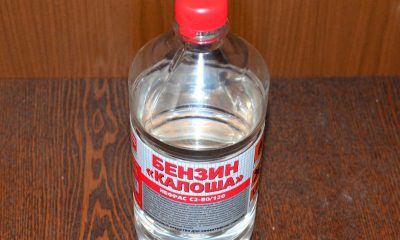 apply gasoline to a cotton pad or foam sponge;
apply gasoline to a cotton pad or foam sponge;- moisten the stain, and if it is dry, you can make several shallow notches on it for better penetration of gasoline into the deep layers;
- leave the disc in the form of a compress for 20 minutes;
- remove the softened compound with a plastic spatula, wipe the treated surface with a clean, damp cloth.
Gasoline is effective against any kind of Tatan. It wipes well liquid nails, mastic, titanium powder and even glue-foam.
Silicate
Silicate glue is also called liquid glass. It is an aqueous alkaline solution of silicates. You can cope with it with the help of a soap and soda solution.
Procedure:
- Dissolve 2 tablespoons of baking soda and 1 tablespoon of powder or liquid soap in water.
- Liberally moisten the sticky spot with the resulting composition.
- Leave to act for half an hour.
- Carefully scrape off the softened blots with a hard blunt object.
Liquid Nails
You can completely get rid of liquid nails if you immediately resort to 2 cleaning methods: mechanical and chemical.
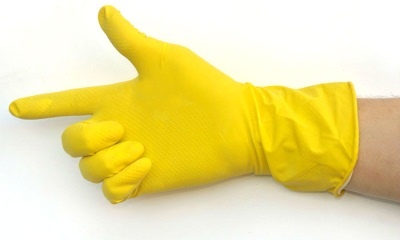 The procedure should be as follows:
The procedure should be as follows:
- a thick layer of liquid nails is cut off with any suitable object: a knife, blade, sharp fishing line;
- clean the stain with a pumice stone, the treatment is carried out until it touches the surface;
- moisten a rag with solvent 646 or acetone, wipe the stain with it until it disappears completely;
- remove residues of chemistry with clean water.
This approach is effective for any liquid nails, regardless of their composition.
Wallpaper
You can get rid of wallpaper glue stains with alcohol or vodka. Use the tool as follows:
- Soak a cotton pad with alcohol.
- Press it to the spot, but do not rub it.
- Remove the disc, wipe the area with a clean damp cloth.
If the stain is dry, use a regular eraser to remove it. They rub the stained surface with it until the glue rolls off.
Silicone
The longer the adhesive silicone has been in contact with the surface, the more difficult it is to get rid of. At room temperature, it hardens very quickly. To combat it, it is recommended to use White Spirit.
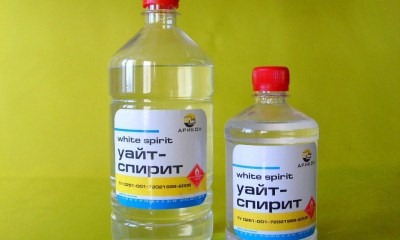 Procedure:
Procedure:
- moisten a gauze swab with solvent;
- wipe the area where the sealant is applied;
- wait 1 minute;
- remove softened silicone with a razor or sharp knife;
- wipe the greasy spot with White Spirit again, rinse off the rest of the product with clean water.
Using a knife or blade, you need to control the pressing force so as not to damage the base on which the silicone is applied.
Mouse
Mouse glue can be removed with vinegar. The acid dissolves its molecules, so it can be easily cleaned from any surface. To combat stains, use table or apple cider vinegar with a concentration of 6-9%.
Finish cleaning with soapy water. If there is a lot of glue on the surface, you can cut off the top of the layer with a blade or a construction trowel.
For rhinestones
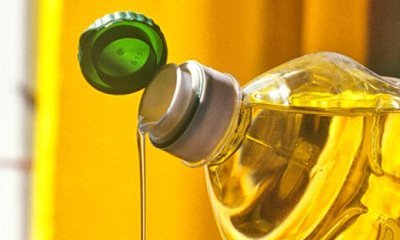 You can get rid of the glue for rhinestones using vegetable oil. Mode of application:
You can get rid of the glue for rhinestones using vegetable oil. Mode of application:
- Soak a cotton pad with oil.
- Wipe the contaminated area with it.
- Treat the surface with dishwashing detergent or other soap solution.
- Rinse with warm water.
This method allows you to get rid of both fresh and dried glue. As a rule, one cleaning is enough to completely remove sticky marks. Read more here.
From stickers
After removing the stickers, sticky marks may remain on the product. Getting rid of them is not difficult. First you need to soak the stain. To do this, the thing is soaked in hot water.
When the glue becomes more malleable, proceed to the main cleaning. For this use baking soda and a foam sponge... Glue is rubbed with it until it disappears completely.
Read more in this article.
Cyanoacrylate
Cyanoacrylate adhesive consists of copolymers that have a high level of adhesion to surfaces. The composition may vary, but removal always involves the use of corrosive substances.
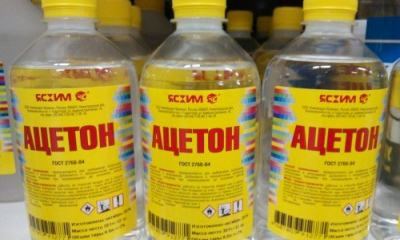 Sparing formulations with cyanoacrylate glue will not cope. Acetone or acetonitrile comes to the rescue.
Sparing formulations with cyanoacrylate glue will not cope. Acetone or acetonitrile comes to the rescue.
To make it work better, make several notches on the surface of the spot with a sharp object. Alternatively, you can erase the stain with sandpaper.
The processed composition is abundantly moistened with acetone and left for 20-30 minutes... This time is enough for the glue to soften. Remove it with a plastic spatula, and wipe the surface with a clean cloth.
Features of removing stains from different surfaces
Depending on the type of surface on which the glue was applied, the methods of cleaning differ:
- Plastic do not expose to heat. It can melt when exposed to high temperatures.
- Glass it is not recommended to rub with sandpaper or any sharp objects. Appeared scratches not only worsen the appearance of the product, but can also cause its destruction.
- Clothes do not treat with caustic compounds. This applies to any aggressive solvents.
- Tree resistant to both mechanical and dry cleaning, but varnished surfaces are not treated with liquids containing acetone.
- Bottle after processing, they are used for storing food products. Therefore, remove the residues of the cleaning agent from them especially carefully, or use vinegar, soda or oil for this purpose.
- Wallpaper are afraid of prolonged contact with liquid substances.
- Leather shoes sensitive to any impact. Therefore, you can get rid of glue stains with a limited set of tools: vegetable oil, warm water, or by freezing.
- Tileslike metal, should not be cleaned with sharp objects in order not to spoil its appearance.
- Human skin sensitive to various aggressive substances. Therefore, it is better to use warm soapy water or vegetable oil to remove traces of glue.
- Linoleum may burn out under the influence of solvents, and sharp objects leave deep scratches on it.
Helpful information
Tips for Removing Glue Traces:
 You need to start processing as early as possible. The longer the adhesive stays on the surface, the more difficult it is to handle.
You need to start processing as early as possible. The longer the adhesive stays on the surface, the more difficult it is to handle.- Use a cotton pad or light-colored cloth to remove the glue. If the fabric is colored, the pigment can be absorbed from it into the treated surface. This will require additional cleaning.
- After removing the adhesive, the surface to be treated should be rinsed with clean water or wiped with a damp cloth to wipe off any solvent residues.
- When using aggressive compounds, it is recommended to test them in an inconspicuous area.
- When working with volatile substances, protect the respiratory system with a mask. Corrosive formulations require the use of gloves.
Conclusion
You can get rid of traces of glue using various means, ranging from food (vinegar, vegetable oil, soda) and ending with aggressive solvents. When choosing, you need to take into account not only the type of glue, but also the features of the surface on which it is applied.
